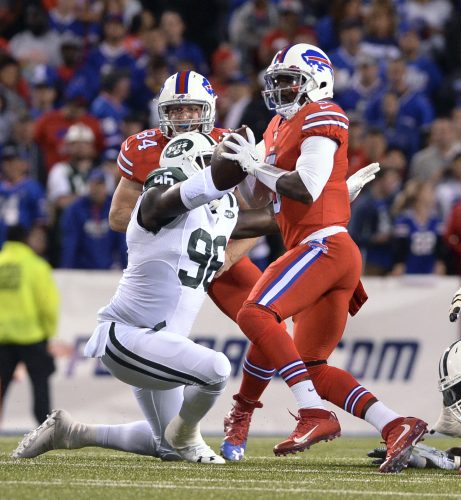
The National Football League came out with a newer protocol prior to the 2016 season for observing and preventing concussions. It puts into place observers that are unaffiliated with either team and rules for examination and re-entry into games.
So in the first game of the 2016 NFL season on Sept. 8, when Carolina Panthers quarterback Cam Newton was slow to get up in the fourth quarter following a hit to the head, the protocol would suggest that he be removed from the game and examined for a possible concussion.
But just because the NFL has a protocol does not mean that it’s enforced, or that they follow it. Newton stayed in for the remainder of the game and received evaluation following the game. Fortunately, Newton went through four different tests after the game and did not have a concussion.
It should not have waited until after the game, however. The protocol lists these signs as observable reasons to examine a player:
-Any loss of consciousness,
-Slow to get up following a hit to the head (“hit to the head” may include secondary contact with the playing surface)
-Motor coordination/balance problems (stumbles, trips/falls, slow/labored movement)
-Blank or vacant look
-Disorientation (e.g., unsure of where he is on the field or location of bench)
-Clutching of head after contact
-Visible facial injury in combination with any of the above
The hit on Newton should have triggered the sideline examination considering he was slow to get up following a hit to the head. A hit to the head, I might add, that earned the Denver Broncos a 15-yard penalty. But 29 medical officials and the referee crew, as well as both coaching staffs, all decided that the hit did not garner a need for a sideline examination.
I’m sure the game being within one point late in the fourth quarter had no bearing on this decision either.
The question is, what is the point of having a protocol and medical staff for in-game concussion assessments if the NFL is not going to follow it? The fact that Newton was examined four times after the game shows that there was concern for a possible concussion, so why on Earth was Newton not taken out of the game?
The bullet point of “slow to get up…” is vague enough to warrant a debate on what “slow to get up” means. And, unfortunately, there’s not a clear system that can determine “slow enough to get up to warrant a sideline examination.”
That means that there needs to be a very liberal definition of “slow to get up,” so that when there’s a shot to the head and any slowness in getting off the ground should warrant an examination.
The NFL seems to be getting the message. On Sept. 15, referee Ed Hochuli sent Buffalo Bills quarterback Tyrod Taylor out of the game after he said he saw Taylor was woozy after a big hit. Taylor missed two plays and was back in the game. Now, this action was in the third quarter, which made it quite different from Newton’s situation.
It’s going to take the NFL taking an important player out on a drive within the final two minutes for them to prove that they are serious about curtailing concussions. But this a sport with a culture that glorifies big hits. And that is unlikely to change for the foreseeable future, which means that the NFL is going to have to be proactive in taking players out of games before they exacerbate possible head injuries further.
It’s necessary for the survival of this league that they take head injuries more seriously. Former players Troy Aikman and Brett Favre have voiced their leeriness of letting their hypothetical sons play football. Current players like Detroit Lions cornerback Rashean Mathis and Minnesota Vikings running back Adrian Peterson have said they don’t want their sons to get into football with Peterson outright saying he won’t let his son play football.
Youth football participation is down as a whole. There was a drop from 3 million youth participants aged 6-14 in 2010 to 2.169 million in 2015, a 27.7 percent drop in only five years. This came out after the first congressional hearings in 2009 on the link between football and mental illnesses.
Head injuries cause concern amongst parents, and if kids don’t get into the game early, then the NFL risks losing fans and future players as they find different activities. It does not help when the NFL is not following their own protocol for their own players.
For the NFL to help their image, they need to be overcautious with head injuries. They need to show that they are serious about making the game safer for players and they need to actually follow through on their protocols.

